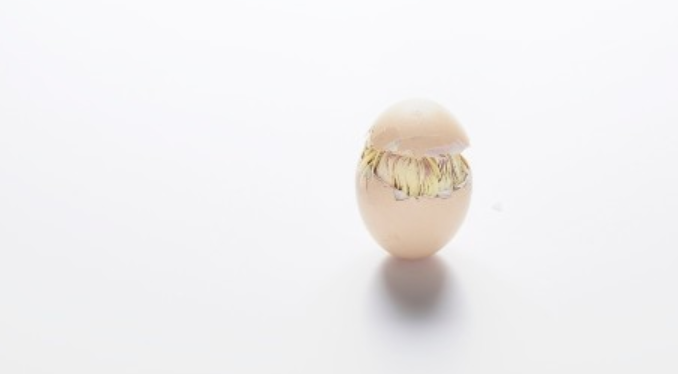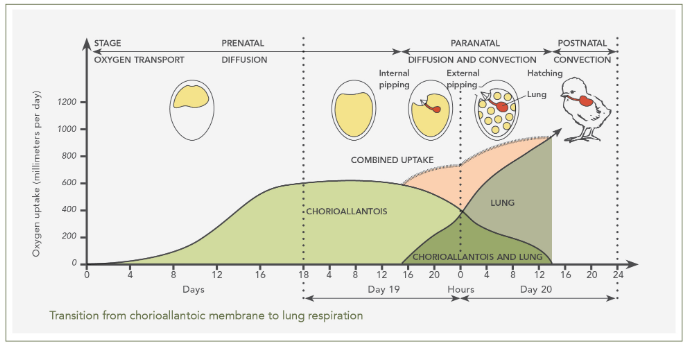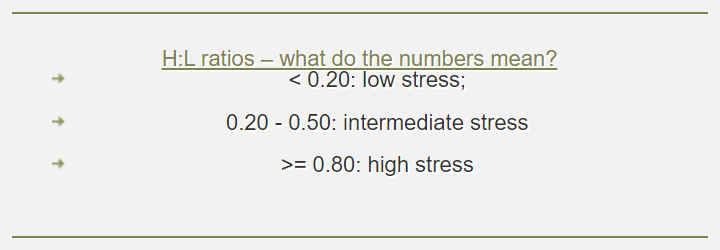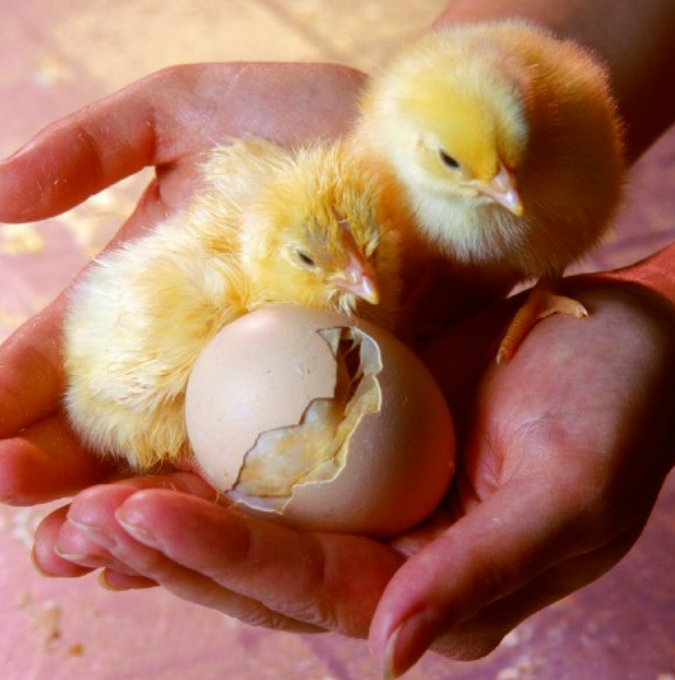



Myth of increased carbon dioxide levels during hatching debunked
For many years, raised CO2 levels at the end of the incubation period were thought to be harmful for the developing bird embryo – this is a myth that couldn’t be further from the truth.
Three essential levels
It’s long been known that in hatcheries, healthy chicks come from mastering and controlling three essential levels, in this order:
- Temperature: the most important environmental parameter, as a slight increase or decrease can severely affect embryonic development, hatchability and post-hatch performance.
- CO2 and O2 levels: affect the development of the embryo’s cardiovascular system, and thus its respiration.
- Humidity level of the air surrounding the eggs: determines the rate at which the eggs lose water and, as a result, lose weight.
Fundamental changes from day 18 on
Many studies have confirmed that dramatic changes occur to the chick, both physically and physiologically, from around day 18 onwards of the incubation period. The most relevant change occurs when internal pipping starts; that’s when the internal eggshell membrane is perforated giving access to the air chamber. This is then followed by external pipping and continues until the chick fully emerges from the shell. The whole process is the transition from fluid to dry.
In essence, the O2 and CO2 levels in the egg’s air cell change as the embryo begins to adopt convective gas exchange by inflating its lungs – in other words, breathing! Previous studies indicate that the O2 level decreases to approximately 14.2 percent, while the CO2 concentration rises to about 5.6 percent. Some might consider these levels excessive and therefore detrimental to the embryo - as they would be to humans - but this is not the case for birds, which have additional breathing capacities for a certain period of time. Indeed, for about 24 hours, starting from when internal pipping begins, the embryo uses both the vascular and pulmonary respiration systems to breathe at the same time (see image), resulting in a combined O2 uptake and therefore improved respiratory capacity.

Different levels of CO2 – a practical test
Scientific evidence, combined with practical observations in commercial hatcheries, confirms that a controlled higher CO2 concentration, even above 1 percent (10,000 ppm), in between pipping and hatching phases actually results in a narrower hatch window without negatively affecting the quality and health of the chicks. In fact, a narrow window like this is better, as it leads to more uniform day-old chicks, as well as a more efficient growth and processing of the chicks in the future.
In partnership with a large and modern commercial hatchery (LAR Cooperativa Agroindustrial, Brazil - which produces about 350,000 chicks a day) and the State University of Ponta Grossa (Brazil), Petersime investigated the effects of higher and lower CO2 levels – 0.45 percent (4,500 ppm) and 0.80 percent (8,000 ppm) – in the hatcher.
320 chicks were subjected to different CO2 levels from internal pipping (which can be automatically detected by Petersime Synchro-Hatch™ technology) until hatching, for a maximum of 24 hours. Blood samples were taken to verify their health and strength.
Among the many blood parameters analysed, we looked at two measurements in particular:
- The number of heterophiles (antibodies that circulate in blood)
- The lymphocyte level (a type of immune cell)
We also checked the H:L (heterophile to lymphocyte ratio) of all the blood samples (see table).

The results (and implications)
The results of the experiment showed that there are nearly three times more heterophiles when CO2 levels are at 0.45 percent (4,500 ppm), compared to 0.80 percent (8,000 ppm).
Scientists have long known that a higher heterophile count – essentially part of the innate immune response – points to a reduced ability to fight inflammatory processes and stress.
Lymphocyte levels, by contrast, are excellent markers for assessing the immunocompetence of birds (i.e. their ability to prevent or control infection by pathogens and parasites). Essentially, the higher lymphocyte count at 0.80 percent CO2 indicates a better response of the immune system. In short, chicks subjected to the higher CO2 level are clearly likely to be more robust and better able to fight disease.
The heterophile/lymphocyte ratio (H:L) is a fitting parameter for measuring the degree of stress in chicks. Petersime’s study shows that CO2 levels at 0.45 percent (4,500 ppm) result in 0.27 H:L (intermediate stress) while CO2 levels of 0.80 percent result in 0.08 H:L (low stress). These findings suggest that it is natural for birds to experience a certain amount of CO2 stimuli during hatching for a short period of time, and that they – contrary to what some believe – even benefit from raised CO2 levels at certain stages.


The truth about CO2 levels during hatching
It has been suggested that an increased CO2 level during hatching causes stress, and forces hatching. Research shows that changing CO2 levels are in fact a positive stimulus – a persistent myth finally debunked! The right CO2 level at the right moment therefore helps the embryo make the switch from chorioallantoic respiration to lung ventilation only, just as it occurs in nature. And the benefits were confirmed by the hatch performance results as well: with +0.50 percent Hatch of Fertile for the eggs that were exposed to 0.80 percent CO2.








